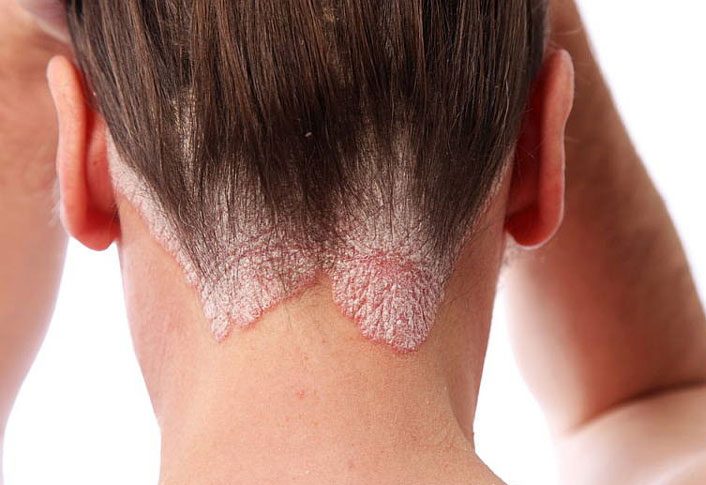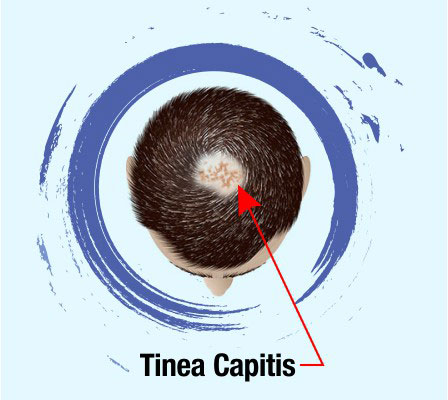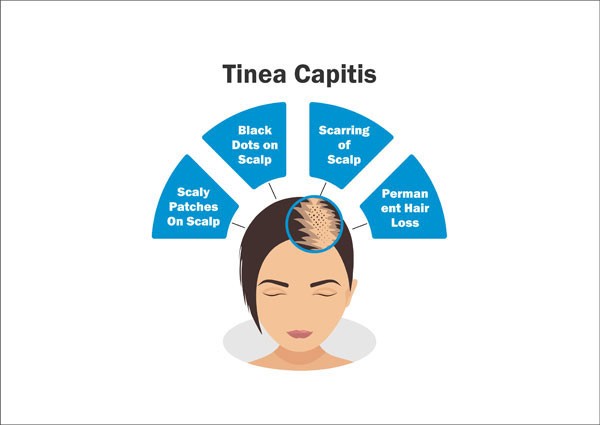
Tinea Capitis - scalp infection

Tinea capitis
Tinea Capitis (Tinea-Moth, Capillitium-Scalp) is a dermatophyte infection of the scalp, caused by T. tonsurans. This infection can cause an epidemic, and the most common patients are children. Tinea Capitis mainly causes the appearance of dry round areas that are covered with scales and can cause alopecia.
This disease is transmitted directly or indirectly. Tinea capitis is a contagious disease caused by anthropophilic and zoophilic species of trichophyton and microsporum. Trichophytia superficialis capilliti. This disease is caused by the anthropophilic species T. tonsurans.

The disease can also occur in children who are in puberty. The way we can recognize that it is tinea capitis is that the changes are visible in the form of round, numerous and very small plates, which merge into irregularly shaped beaches. The hairs are unevenly broken, they lose their shine, but there are always healthy, unbroken hairs inside the focus. Also, pustules-inflammation of hair follicles can occur.
Types of infection:
- Tinea capitits is an infection caused by microsporum and trichophyton, which in most cases affects the scalp.
- Tinea imbricata, a fungal infection caused by trichophyton concentricum
- Tinea favosa favus caused by trichophyton schoenleini infection
- Tinea cruris - a fungal infection in the groin
- Tinea unguium or onychomycosis — a fungal infection of the nail
- Tinea pedis-fungal infection in the feet
- Tinea manuum-a fungal infection of the hands
Tinea Capitis are scaly patches that look like scales caused by seborrheic dermatitis. A more severe form of tinea capitis may appear as scaly erythema. Scaly erythema affects the hair and as a consequence can lead to alopecia or hair loss.
Tinea capitis is presented in three forms:
Ectothrix affects the most distant part of the hair and the cuticle is destroyed. This is due to the fungus microsporum canis, microsporum gypseum, trichophyton equinum and trichophyton verrucosum.
The endothrix attacks the hair shaft, while the outer hair cuticle is intact. This form is caused by trichophyton tonsurans and trichophyton violaceum.
Favus is a type of hair invasion caused by trichophyton schoenleinii and results in hair loss.
In most cases, there can be confusion about this disease because tinea capitis often looks like dandruff that is not specific. There are some cases where localized, wet and hardened granulomas - kerions develop. Kerions signify deep trichophytosis of the scalp, where severe inflammation and reactions to dermatophyte infection can occur and they can cause permanent hair loss as well as scarring.

Diagnosis of tinea capatitis
Initially, the scalp is examined and whether scaly lesions are present, and hair loss is also examined. Then, samples are taken from the places affected by this disease.
Treatment
In this form of the disease, it is necessary to consult a specialist doctor. Local treatment can be divided into a deep form of tinea capitis. In the deep form of the disease, manual epilation of the affected areas is necessary, as well as the edge of healthy hair, with washing and application of imidazole or antibiotic preparations. While with superficial tinea capitis, it is necessary to cut the hair once a week and regularly apply shampoos that contain imidazole or other antifungal preparations.












